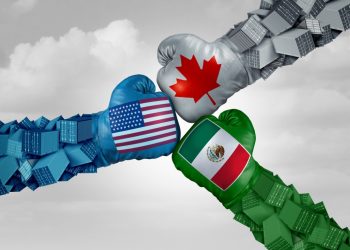 By Barbara Quinn
By Barbara Quinn
RISMEDIA, August 4, 2008-(MCT)-Q: I keep hearing about amazing health benefits of what food processors now refer to as “Superfruits.” What are they?
A: “People think superfruits are found just growing in an exotic forest somewhere. That’s just not true. You can create a superfruit,” says one author of a book called “Successful Superfruit Strategy-How to build a Superfruit Business.”
What’s the appeal? Superfruits demand super prices-sometimes 20 times higher than “traditional” fruit.
Are they worth it? Here are a few observations:
– A gave nectar is the juice from agave-a fruit native to Mexico. Agave nectar is a “natural sweetener” as are the juices of other fruits. Its benefits, say promoters, is that agave juice is high in fructose, which is absorbed slowly into the body. Agave nectar thus has a low glycemic index-it causes lower rises in blood sugars.
I find it interesting that the high fructose content of agave nectar is seen as a benefit while the same fructose in high fructose corn syrup is viewed by some as the plague. In fact, agave juice is higher in fructose (85%) than apple or pear juice (66%) or high fructose corn syrup (55%), according to food chemist Julie Miller-Jones, PhD.
– Goji (“go-gee”) berries are delicate red-orange berries related to tomatoes, potatoes and eggplant. A native fruit of China, goji berries are rich in vitamin C and beta carotene–potent antioxidants that help keep our body cells intact and healthy. And like other brightly colored fruits and vegetables, goji berries are said to rank high in “Oxygen Radical Absorbance Capacity” or “ORAC.” This measurement was developed by the United States Department of Agriculture to quantify the antioxidant capacity of certain foods. Problem is, I couldn’t find goji berries listed on the latest USDA ORAC list of foods.
– Acai (pronounced “ah-sigh-ee”) is a small purple berry native to the Amazon rainforest. Acai berries are especially rich in vitamins, minerals and are reported to be extremely high in antioxidant properties that protect cells from oxidation damage. Because the acai berry is so delicate, it is mostly marketed as a juice.
– Mangosteen is not related to the mango. It is a purple-colored tropical fruit with a white pulp. It’s the bright-colored skin of the mangosteen that contains most of its phytochemicals-natural plant substances with health benefits. Studies on animals show that mangosteen may help relieve inflammation-a condition related to chronic diseases like arthritis and heart disease.
– Noni is a white fruit grown in Southeast Asia and the Pacific Islands known to be especially high in vitamin C and potassium. Like other fruits and vegetables, noni is also an excellent source of various health-promoting phytochemicals. Noni has been reported to interact with certain medications, including warfarin, a blood thinner. It has also been shown to stimulate insulin release from the pancreas, a caution for people on diabetes medications.
Are these foods really “super” foods? Or are they just other fruits in our arsenal of plant foods known to have beneficial effects on our health?
Unfortunately, human research is lacking and anecdotal information is rampant.
If you can afford them, go for it. But let’s not forget our local boys. Locally-grown, brightly pigmented fruits and vegetables are always the healthiest choices.
Barbara Quinn is a registered dietitian and certified diabetes educator at the Community Hospital of the Monterey Peninsula.
© 2008, The Monterey County Herald (Monterey, Calif.).
Distributed by McClatchy-Tribune Information Services.










